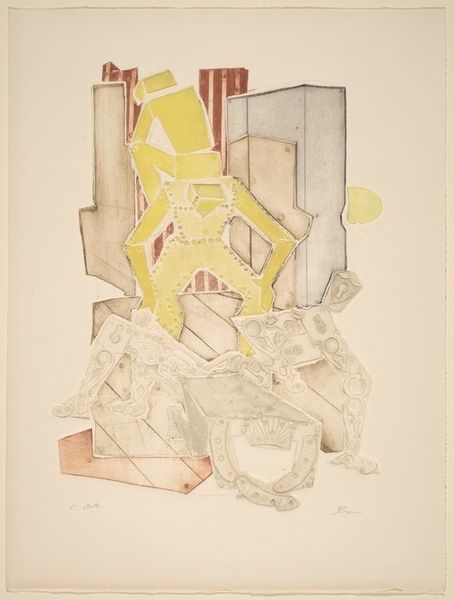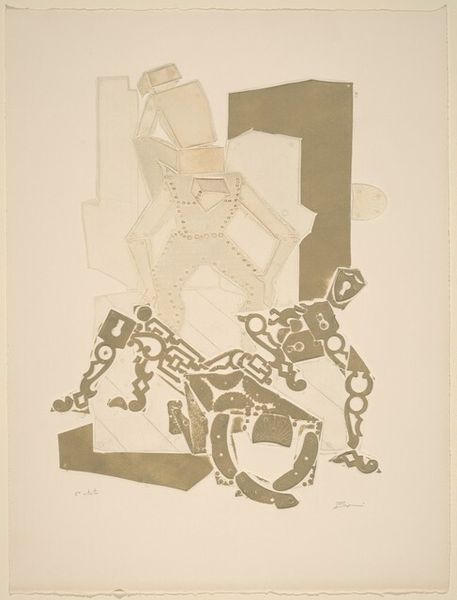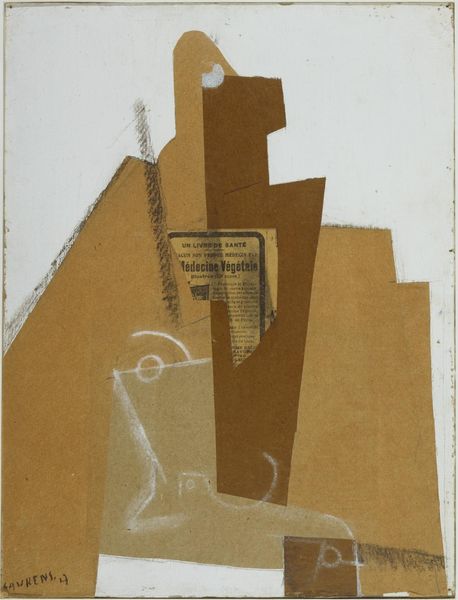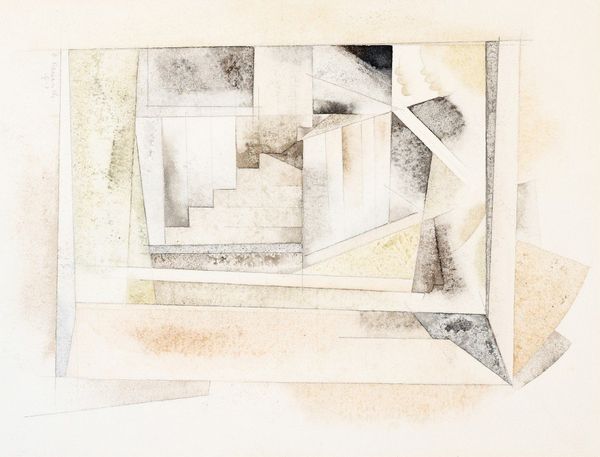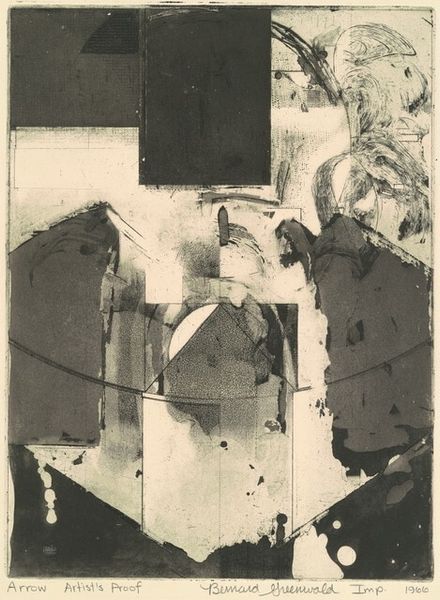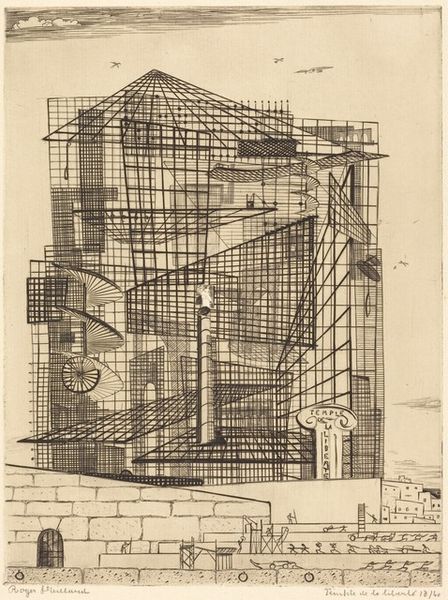
collage, print, etching
#
cubism
#
collage
# print
#
etching
#
geometric
#
geometric-abstraction
#
modernism
Copyright: National Gallery of Art: CC0 1.0
Editor: We're looking at Paolo Boni's "Omaggio a Braccelli (7th state)" from 1968, a collage and etching print with lots of geometric shapes. It's quite muted in color. There's almost a feeling of fragmented figures and architectural structures mashed together. What do you make of it? Curator: It's fascinating how Boni layers these seemingly disparate elements, isn't it? I see a critical dialogue emerging, especially considering the period. Cubism's deconstruction of form meets the anxieties of a rapidly industrializing world. Do you see how the "figures," rendered almost as machine parts, might speak to the alienation of the individual within increasingly complex systems? Editor: I hadn't considered that! So the geometric abstraction isn't just about aesthetics but a commentary on societal structures? Curator: Precisely. The 'Omaggio' suggests an unstable world built upon fragmented identities and the echoes of earlier art movements. Notice the historical reference in the title, a homage, pointing to the ever-present influence of the past in our understanding of the present. In what ways, do you think the technique--collage and etching--reinforce that sense of fragmentation and layering of meaning? Editor: Because both are about bringing different elements together to form one, layered art work, but here this process is deliberately emphasized so we are reminded of this act of creation. It is all disjointed! Curator: And it invites us to piece together our own understanding of it, considering both historical context and our own contemporary perspective. Boni’s work challenges us to question the stability of the narratives we construct. Editor: I see what you mean. It makes you wonder about power structures within society, the role of the individual. It's more than just shapes. Curator: Exactly! It shows us that art doesn't exist in a vacuum; it's always in conversation with its time and with us. Editor: That's given me a lot to think about. Thank you.
Comments
No comments
Be the first to comment and join the conversation on the ultimate creative platform.
